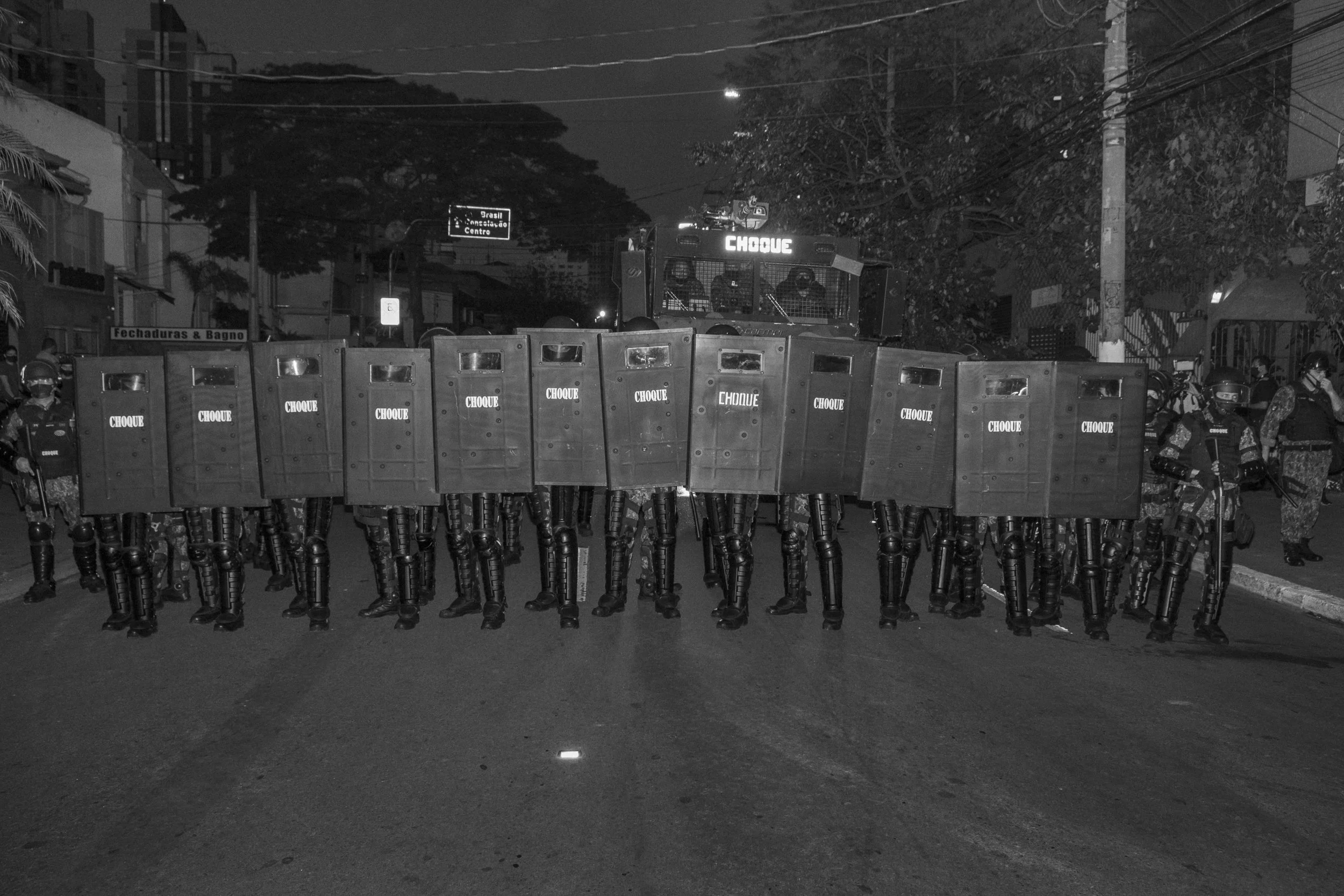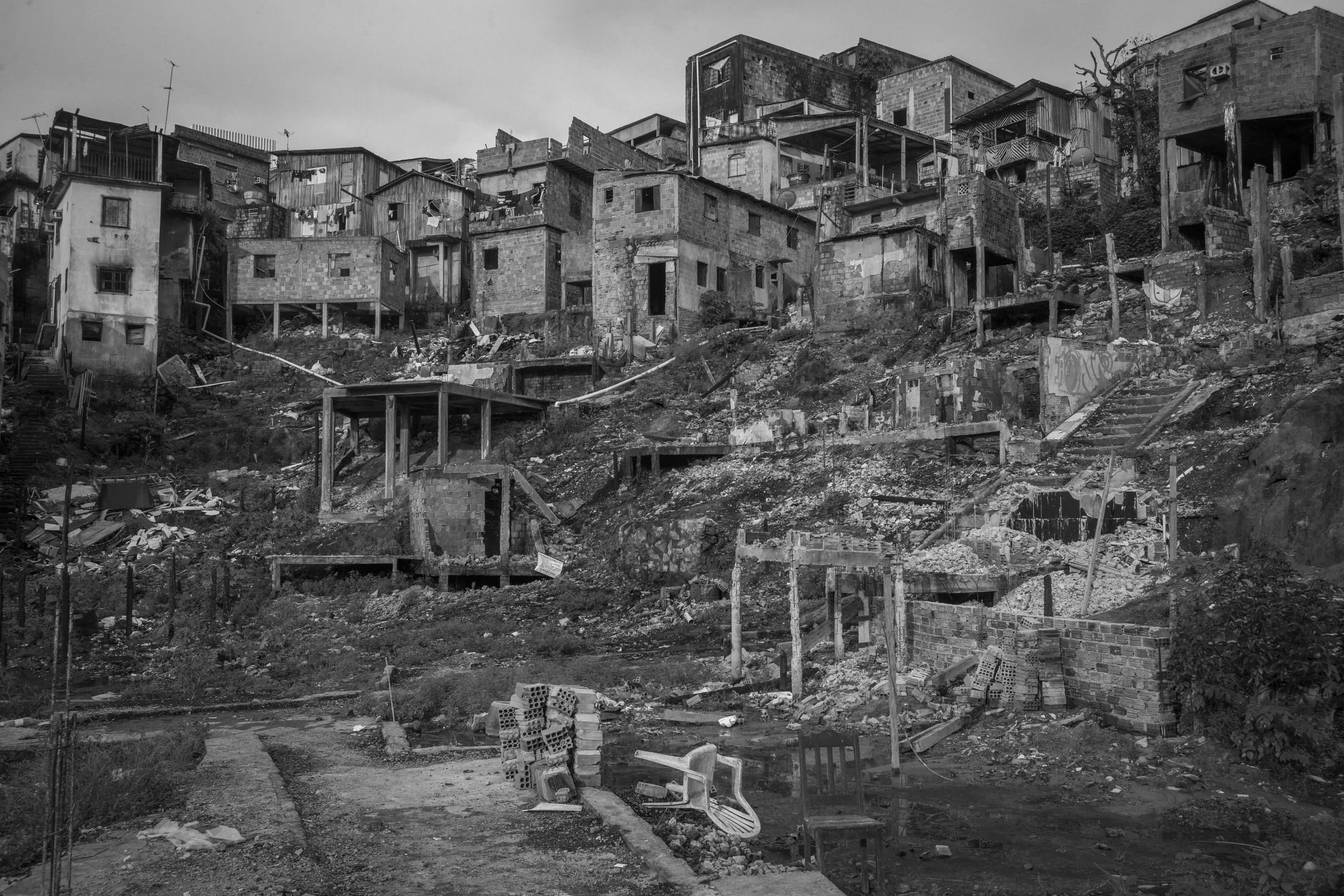
Tropic of Violence
With nearly 40,000 homicides in 2024, Brazil remains one of the most violent countries in the world.
This photographic project explores the complex geography of violence across Brazil—focusing on the northern and northeastern regions, where state neglect, organized crime, and deep-rooted inequality collide with devastating force.
From the urban peripheries to remote Amazonian towns, violence is systemic and normalized. Young Black men from poor communities are the primary victims, caught between drug gangs and one of the world’s deadliest police forces. In these territories, impunity is the rule, and the state is often absent or predatory.
Far from the postcard clichés of samba and carnival, this work documents a parallel Brazil—one shaped by fear, grief, and survival. A portrait of violence in the tropics.
A young man lies dead in the streets of a poor neighbourhood in Manaus, as family members, neighbours and police wait for authorities to collect the body and take it to the morgue. 2019.
Young gang members of A Família do Norte – The Northern Family or FDN - in Manaus. 2019.
Members of the Brazilian Military Police special unit, Choque, advance to disperse a demonstration in São Paulo. 2020.
Inmates at the 11 Distrito police imprisonment facility in Curitiba, state of Parana (Brazil southeast), using hand gestures to convey the dire overcrowding in their cells. 2015.
Families of inmates held at the Cremacao police imprisonment facility in Belem, Pará state, react after hearing gunshots fired by a special operations police squad during a prison revolt. 2015.
stilt houses in Guama, one of the most violent neighborhood in Belem, Pará. 2018.
Brazilian TV reporter Marcelo Rezende, also known as Águia Dourada, reports from the scene of a homicide in Fortaleza, Ceará state in northeastern Brazil. 2018.
A young girl collapses on a packed bus as party-goers flee tear gas during a police raid on an illegal funk party in Manaus. 2017.
Two drug traffickers consuming cocaine in the outskirts of Manaus. 2015.
Italo Sena (25) performs a funk dance in Vila Silvia, a favela in São Paulo. 2020.
Young boys held in custody at a police station in Belém, Pará, after being accused of robbery. 2018.
The Favela do Bodozal community in Manaus caught fire in December 2018.
Vultures at the port of Manaus. Once a gateway to the forest, Manaus is now a key transit point for cocaine from Colombia and Peru, bound for Brazil’s south or Europe.
Rogério de Souza Pinheiro, 27, lays dead in a morgue in a Manaus hospital, his brother grieving behind. Rogério worked as a bricklayer and went to visit a friend’s house. But Rogério’s friend was wanted by gangsters. When they arrived at the friend’s house, they killed Rogério by mistake. In Manaus and across Brazil’s Amazon states, the vast majority of murders go unsolved. This creates a sense of impunity for criminals, which in turn stimulates even more violence.
Inmates in an overcrowded cell at the triage facility of the Americano Penitentiary Complex, Santa Izabel do Pará, 2015.














